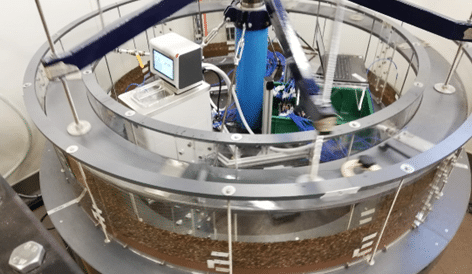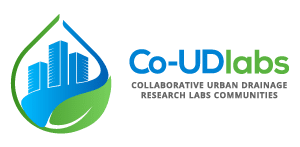Transnational Access Project: Temperature time series analysis for predicting sedimentation in sewer systems
Institutions involved
- Universidade da Coruña (UDC), Spain
- Deltares, The Netherlands
- University of Sheffield (SFD), United Kingdom
- Lulea Technical University, Sweden
- TU Delft, The Netherlands
- Water Board De Dommel, The Netherlands
- Stockholm Vatten AB, Sweden
Duration
01/06/2023-01/09/2023
About the project
The goal of this Transnational Access project was to determine if it is possible to measure the accumulation of sediment in the sewer environment, which involves a constant flow, using the principles developed in a previous Co-UDlabs project at EAWAG. The project at EAWAG used a static bench-top setup which demonstrated the potential of identifying sediment build up using temperature sensors. A new high resolution temperature measuring system was built by technicians at the University of Sheffield to test the principle that temperature readings could be used as an analogue for sediment accumulation, allowing for sedimentation to be predicted in flowing sewers.
The project involved the use of the annular flume facility (a circular flume creating an “infinite” flow for the study of sediment in moving water) at the University of Sheffield. This project required modification of the existing flume and technicians were a key part of getting the instrumentation installed and run the initial tests to ensure that the equipment was working as intended.
Main findings
- Using temperature works well as an analogue for sediment build up in a sewer environment, and this in turn allows for cleaning campaigns to be better organised. This project showed a proof of concept for this technology. The data quality far exceeded what was anticipated and demonstrated that there is good potential for future application of this technology.
- With better maintenance of a sewer system, it is possible to better manage blockage risk, pollutant build up and flood risk. If the technology is installed in locations deemed to be “high risk” then this is also means that maintenance is not triggered unnecessarily.
- It is difficult to get sediment build up data and this technology can potentially be used to better understand the transport and accumulation of sediment and pollutant. This information would allow for mass balances to be done, which can be key when determining the fate of sediment and pollution. The hope is that in the future this can lead to a change in management practices.
Successful outcomes:
- Whereas there is no immediate funding to apply the technology, as it needs further development, the TA team are enthusiastic to know that the technology is there. The immediate next steps for this research would be to apply for innovation funding which would lower the financial risk for a potential developer, as it is necessary to further develop this technology to get initial uptake and allow for field tests to be done to give the technology credibility. The longer-term next step would be to do field tests and to have a reputable developer associated with the technology who can then prepare the technology for a practitioner conference, which would be an effective way of disseminating these new technologies to practitioners.
- The presentation of this work at the ICUD conference 2024 was shortlisted for the Poul Harremoës Award.
Useful links:
- Journal paper (Regueiro-Picallo, et al., 2024), https://zenodo.org/records/13936135
- Data storage report https://zenodo.org/records/10821838
- ICUD Conference paper https://zenodo.org/records/13936053

